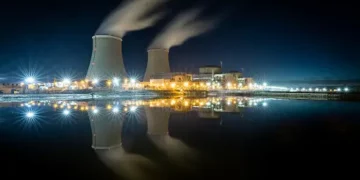The escalating impacts of climate change are increasingly challenging the manufacturing industry, with global warming causing more frequent and severe weather events such as flooding, hurricanes, and extreme temperatures. These changes are reshaping manufacturing operations, affecting worker productivity, and influencing long-term investment planning.
Impact of Extreme Heat on Productivity and Worker Safety
One of the significant challenges for manufacturers is the impact of extreme heat on worker productivity and safety. The United Nations’ Human Climate Horizons Project, in collaboration with the UN Development Programme and the Climate Impact Lab, projects that rising temperatures will lead to a reduction in the amount of work that can be accomplished in hot conditions, posing health risks to workers. For example, in the U.S., without intervention in global emissions, the average worker could lose 0.4 hours of productivity annually between 2040 and 2059. In India, this could result in a staggering 19.6 hours lost each year due to exposure to extreme heat.
Flooding Threats to Manufacturing Facilities
In addition to heat, increased flooding is posing a significant risk to manufacturing facilities. Instances such as the temporary shutdown of an Abbott Laboratories factory due to flooding highlight this growing concern. Researchers from Cornell University and the International Labour Organization have found that contract manufacturers and suppliers, especially in Southeast Asia, are at risk of extreme flooding and potential submersion. This presents a dire situation for these companies, often lacking the resources and infrastructure of larger multinational corporations.
Adapting and Mitigating Climate Change Effects
The widespread effects of climate change necessitate both adaptation and mitigation efforts from manufacturers. Federal policies may need to address worker safety standards for extreme conditions. Manufacturers are advised to consider investing in protective measures like air conditioning, breaks, and water stations for workers exposed to extreme heat. Additionally, relocating or reinforcing facilities in flood-prone areas is becoming increasingly crucial.
Balancing Environmental Concerns and Economic Risks
Managing the risks of climate change involves not only addressing environmental concerns but also understanding the economic implications of weather-related disruptions. As Thomas Kurfess, a professor at Georgia Tech, points out, companies need to balance environmental responsibility with economic risk management. The severity of these disruptions is directly linked to global emissions levels.
The manufacturing industry faces the dual challenge of adapting to the immediate risks posed by climate change, such as extreme heat and flooding, while also contributing to broader efforts to reduce global emissions and mitigate future climate impacts.
Your go-to for supply chain report news updates: The Supply Chain Report. For international trade tools, see ADAMftd.com.
#ClimateChangeImpact #ManufacturingIndustry #ExtremeHeat #WorkerSafety #FloodingRisks #ClimateAdaptation #ClimateMitigation #UNClimateHorizons #UNDP #ClimateImpactLab #GlobalWarming #HeatStress #WorkerProductivity #EnvironmentalRisks #AbbottLaboratories #CornellUniversity #InternationalLabourOrganization #SoutheastAsiaManufacturing #ClimatePolicy #SustainableManufacturing #EconomicRiskManagement #GlobalEmissions #ProtectiveMeasures #FacilityAdaptation

















